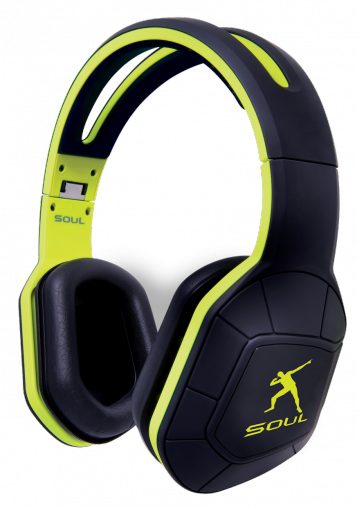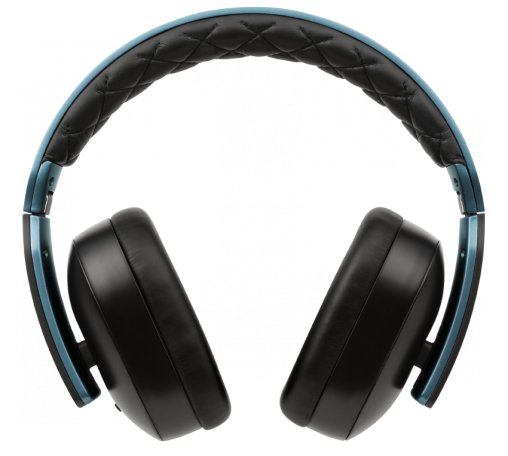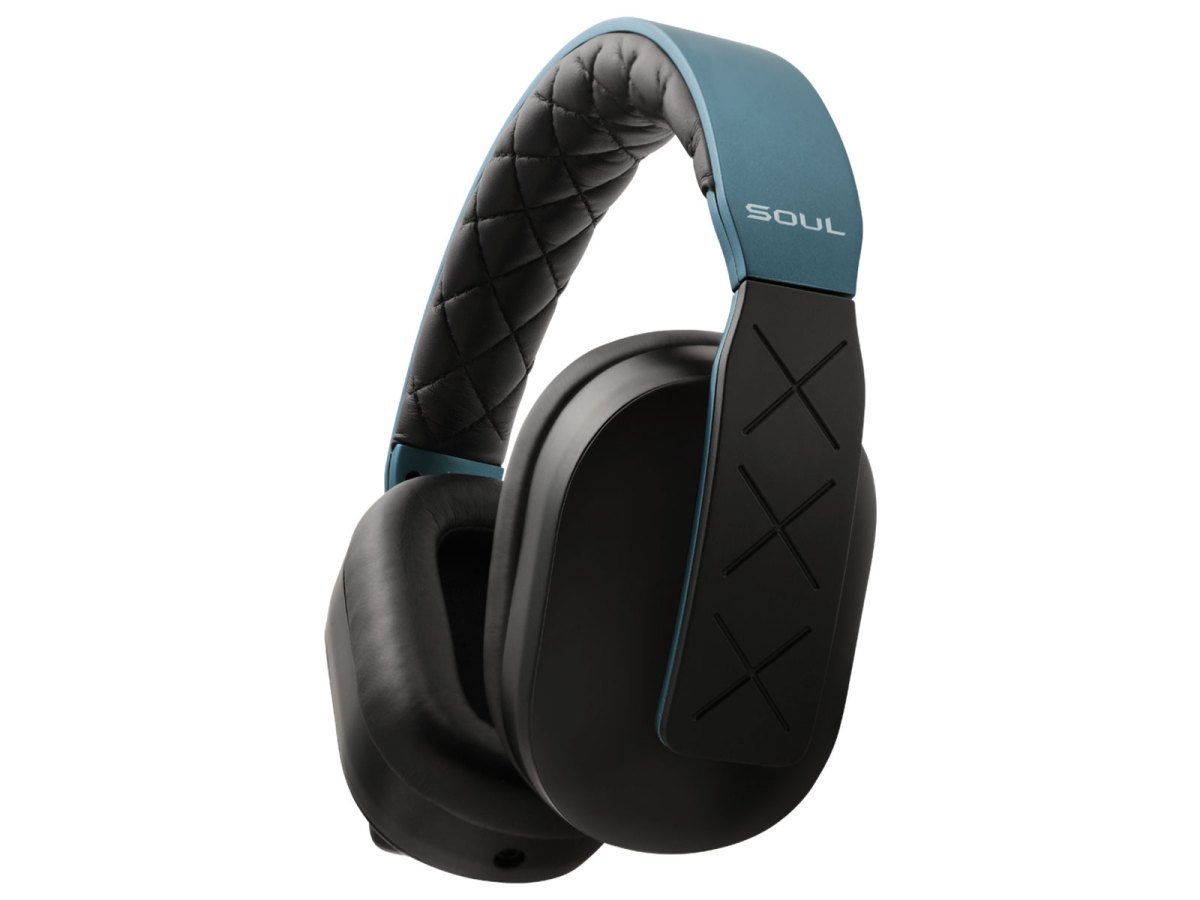Review & Feature; filed from the United Kingdom
It’s been an intriguing few months both in Australia and globally for the Soul range of headphones. While soul music experiences a remarkable renaissance in popularity, both on the charts and on the indie scene, the Soul brand is looking to reinvigorate itself.
After being launched into Australia at premium price points through Tempo Australia, and gaining brand endorsements from an eclectic range of musicians and athletes, the brand slowly sank into obscurity, having failed to successfully compete with Beats, the runaway leaders in that high-price, high-fashion, somewhat-iffy audio quality headphone space.
Tempo Australia successfully sold the Soul range into department stores and dedicated electronics outlets and while the first batch of headphones were perfectly passable to the casual listener, if not having the most stylish form factor, it’s hard to suggest it was a raging success. But marketing Soul headphones isn’t Tempo’s long suit. The Sydney-based distributor’s core competency is sourcing electronics and appliances on request from retailers, badged with a name brand like Hitachi or Onix or Akai, and then shipped in a mass channel, often as an exclusive, at a competitive price. Tempo’s own business model diagram doesn’t include a coloured circle for rapper-endorsed headphones.
While GfK has repeatedly celebrated the sales growth of high-end headphones over the past 24 months, it does not break out individual brands, and it’s suspected that most of the heavy lifting in this value surge is being done by Beats, with the well-regarded models by Harman/Kardon, Sennheiser and Bose also performing well.
In April 2013, South Australian-based distributor Powermove, which has Jays, Klipsch and Philips in its stable, announced it was taking over the Soul wholesaling from Tempo. The media release said Soul was “a brand built on greatness” and even carried quotes from Ludacris, the popular American rapper that had been associated with the brand since its inception.
At the time of this switch, Ludacris was joined in the Soul celebrity stable by American footballer Tim Tebow, Barcelona midfielder Cesc Fabregas and world’s fastest man Usain Bolt. Two months later, Korean singer Psy would be added to this list.
When Powermove sent out a media release on 18 March 2014 to announce that “Soul Electronics…are relaunching their brand in Australia”, there was no mention of Ludacris at all (he’s also been scrubbed from Soul’s American master website), while Fabregas is now appearing in Beats commercials in the United Kingdom. That leaves one-megahit-wonder Psy, the virtually unknown Tebow and the admittedly world famous superstar Bolt to carry the promotional burden, along with freshly-minted spokeslistener Brendan Schaub, a star in the emerging sport of Mixed Martial Arts (MMA).
While Bolt is a fantastic name to have on board, the others offer limited appeal in Australia and none have any musical credibility to sell headphones based on audio quality. There may be persistent criticisms of Beats’ actual audio quality but there is no doubt that Dr Dre is a seasoned performer and producer with enormous cachet; comfortably enough to move millions of headphones.
In a deft piece of turning what could be a disadvantage into a positive, Powermove is relaunching Soul not as a fashion-forward or audio aficionado brand but as a fitness accessory. Having successful sportsmen on the books is a benefit here, though there seems more than a hint of RetConning the brand when listening to the official quotes about this move:
For the last three years, consumers have cited exercise as their number one reason for purchasing headphones. Filling a void in the market, SOUL has positioned itself as the first producer to deliver athletic headphones that are perfect for active lifestyles. Intended for the competitor in us all, the Combat Series headphones are the answer for consumers who use music to push themselves to the next level.
“Working with elite athletes gave us insight into the power music has to inspire and drive athletes to perform at their best,” said Lan Kennedy-Davis, CEO of Soul Electronics USA. “The Combat Series incorporates the latest in active performance technology and design, delivering a range of products for athletes and weekend warriors alike.”
The use of the past tense on “gave us insight” is the giveaway here: assuming Bolt and Co. actually did work closely with Soul, and I’m inclined to think most stars do take these multimillion dollar deals seriously, they weren’t going to provide any earth-shattering insights into pitch, timbre or tuning. And so it is that Soul is now the celebrity-endorsed brand of choice for athletes.

Powermove is backing up this Stateside rhetoric with similar themes. In a nice piece of pro-Soul and anti-Beats trend forecasting, Powermove marketing manager Kyla Schmidt said “over and on-ear products will be less focused on fashion and provide more function with features such as washable ear cushions and breathable headbands” and then promptly left the employ of Powermove. Current Powermove employees have asserted that the company stands by this prognostication.
The new range certainly isn’t narrow: there’s Combat+ over-ear headphones; Transform and Loop on-ear headphones; Flex, Mini and Fly One earphones and Jet noise cancelling headphones. There’s also Usain Bolt’s signature Run Free in-ear headphones, just to add to the confusion. Each come in a range of colours, mostly shades of blue and green. In the first batch of SKUs announced by Powermove, only Usain Bolt has branded units.
So how do these headphones sound? Rather than take a pair for a jog around the block, I borrowed a pair of the Jet noise cancellers for my trip to EuroCucina in Milan.

The first thing you notice is the absolutely magnificent merchandising, in which the headphones and associated accessories are revealed through a series of sliding cardboard. The packaging is bigger than a shoebox but rather than simply lifting the lid, one must navigate through the dimples and recesses of several sleeves, like a child gleefully mastering a carnival funhouse, before finally finding a pair of headphones, two cords (one for Apple, one for Samsung), an included AAA battery, aeroplane and hi-fi adaptors and a nice-enough if slightly cheap-feeling oval-shaped carry case complete with a carabiner for clipping onto a belt or securing to the side of a mountain.
While a friend of mine with apparently better hearing complained that these headphones didn’t completely cover his ears, leading to bent-ear-strain, I am not experiencing that while listening to Sea Change by Beck and typing out this sentence. The Jet headphones didn’t cause any discomfort during the 20-odd hours of flying from Sydney to Hong Hong to Milan, nor did the battery run out until quite some time later, meaning that a twin pack should be more than enough for return long haul flights and a quad pack should last all holiday long on heavy listening: a real boost when compared to battery guzzlers or rechargeable models that don’t offer a disposable battery option.
(I posit that noise cancelling headphones is the last frontier for replaceable batteries; in all portable consumer electronics, a rechargeable battery is superior but with power sources still unreliable up in the air, the convenience of switching in a new battery is much preferred to enduring the engine noise in between pit stops.)
The sound quality on these headphones is excellent. On the absolute loudest volume my MacBook Air can project, there is no distortion and not a word was missed while catching up on Game of Thrones and The Walking Dead while 30,000 feet in the air. Turn on the noise cancelling function, which is a switch on the left can, and you really can’t hear anything save the audio being pumped into your brain. I’ve transitioned to I Believe You Liar by Washington and the clarity is excellent.
Are they cool to wear on the bus and in the street? Hmmm: seems doubtful. This is a pair of headphones to wear while static, in a plane or train seat on watching catch up TV in bed. Are they saleable for RRP $249? I think they are. Will anyone come in and ask for them directly? That seems less likely, unless Powermove and Soul have some whizzbang marketing campaign up their sleeves. First step: find a replacement for Kyla.

